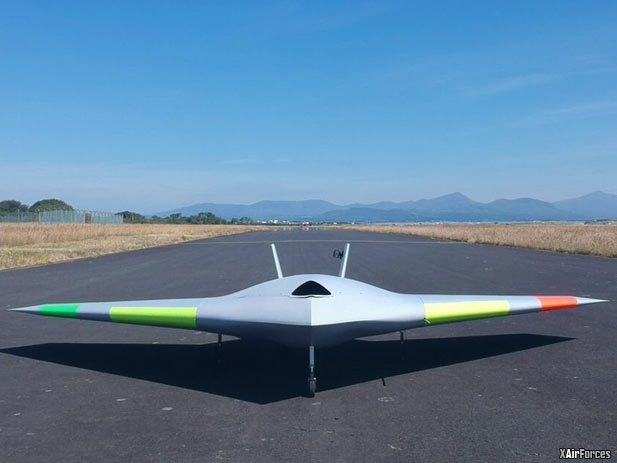
UK's Future Combat Air System (MAGMA) project

Successful demonstration of breakthrough blown-air flight technologies to revolutionise future aircraft design.
The aircraft, known as the MAGMA unmanned aerial vehicle, is capable of maneuvering without the traditional wing flaps found on aircraft through the use of air that's blown from its engine through special slots in its wings at supersonic speeds.
The prototype drone, developed by researchers from Manchester University with assistance from engineers at BAE Systems, was test-flown out of the Llanbedr Airport in northwest Wales.
In addition to its wing-based circulation controls, the titanium aircraft is said to have use 'fluidic thrust vectoring,' a technology concept developed by Manchester University researchers nearly two decades ago using blown air to deflect exhaust to allow for changes to be made to the aircraft's trajectory.

Drone furtivo Magma(Photo by © Captura de tela: BAE Systems)
Bloomberg indicated that the aircraft and its technology could help with the development of the UK's Future Combat Air System project, the UK's sixth-generation warplane concept.
Bill Crowther, MAGMA project leader at Manchester University, said that the university's partnership with BAE Systems has given them "the freedom as a university to focus on research adventure, with BAE Systems providing the pathway to industrial application."

Successful demonstration of breakthrough blown-air flight technologies to revolutionise future aircraft design.
Julia Sutcliffe, Chief Technologist, BAE Systems Air, said: “MAGMA is a great example of how collaborating with bright minds at British universities can deliver ground-breaking research and innovation. Our partnership with The University of Manchester has identified cutting-edge technology, in this case flap-free flight, and turned what began as a feasibility study into a proven capability in just a number of months. It demonstrates how STEM can be applied in the real-world and I hope the success of these trials inspires the next generation of much-needed engineers and scientists.”
Bill Crowther, senior academic and leader of the MAGMA project at The University of Manchester, added: “We are excited to have been part of a long-standing effort to change the way in which aircraft can be controlled, going all the way back to the invention of wing warping by the Wright brothers. It’s been a great project for students to be part of, highlighting that real innovation in engineering is more about finding practical solutions to many hundreds of small technical challenges than having single moments of inspiration.
“The partnership with BAE Systems has allowed us the freedom as a university to focus on research adventure, with BAE Systems providing the pathway to industrial application. We made our first fluidic thrust vectoring nozzle from glued together bits of plastic and tested it on a hair drier fan nearly 20 years ago. Today BAE Systems is 3D printing our components out of titanium and we are flight testing them on the back of a jet engine in an aircraft designed and built by the project team. It doesn’t get much better than that.”
The technologies demonstrated in the trials were
Wing Circulation Control: Taking air from the aircraft engine and blowing it supersonically through narrow slots around a specially shaped wing tailing edge in order to control the aircraft.
Fluidic Thrust Vectoring: Controlling the aircraft by blowing air jets inside the nozzle to deflect the exhaust jet and generate a control force.
The trials form part of a long-term collaboration between BAE Systems, academia and the UK government to explore and develop flap-free flight technologies, and the data will be used to inform future research programmes. Other technologies to improve the aircraft performance are being explored in collaboration with NATO Science and Technology Organisation.
Source: BAE SYSTEMS NEWS – 2 May 2019
Photo: UK's Future Combat Air System project (MAGMA project), BAE Systems Weapons Giant Tests Flapless Drone (Photo by BAE Systems)
Imone Shepherd (UNITED KINGDOM XAIRFORCES Editor)
EUROPEAN AIR FORCE NEWS
imoneshepherd@gmail.com
Facebook.com/ImoneShepherd
(12.05.2019)
|